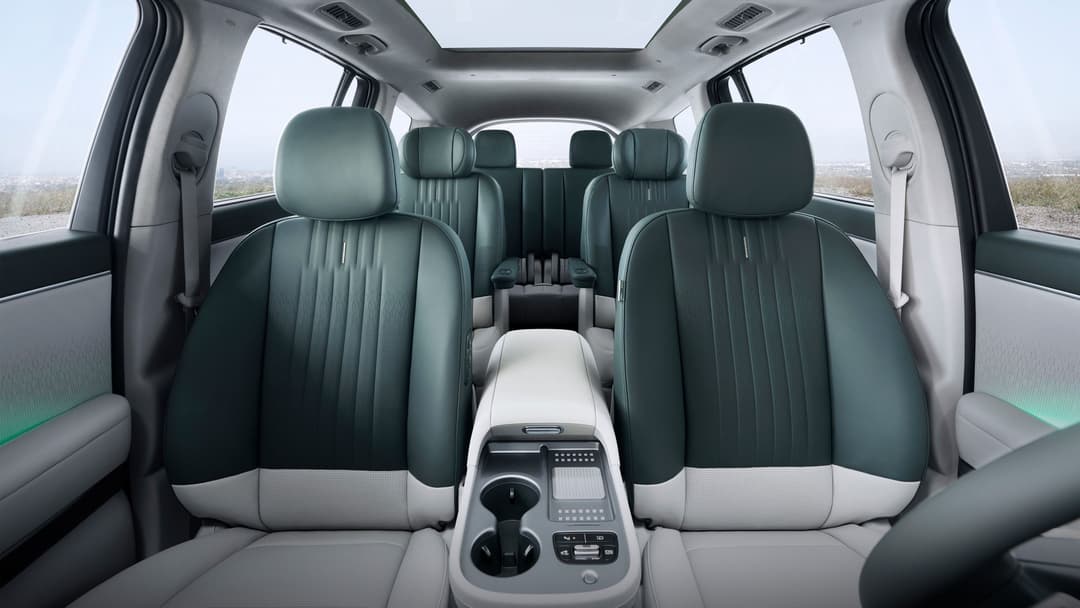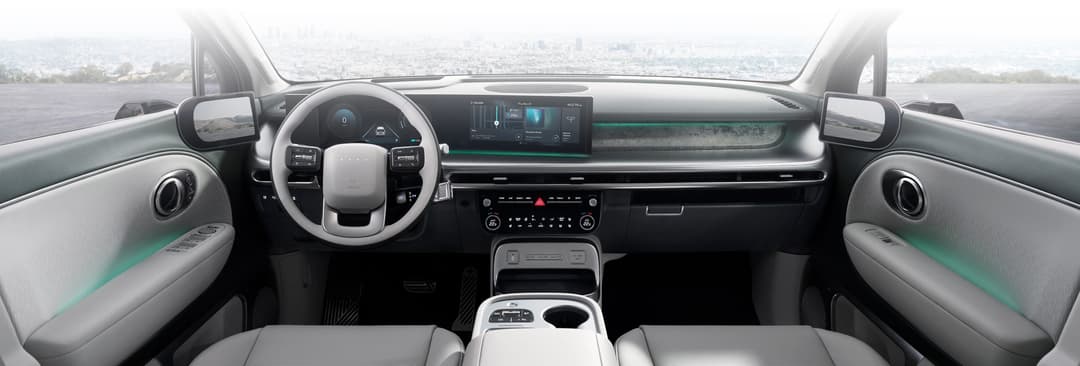Hyundai’s highly anticipated Ioniq 9 has been officially priced in its home market of South Korea, but how will this upper-large electric SUV fare when it lands in Australia? With Hyundai already indicating a sub-$100,000 starting price locally, the big question remains—will it be competitively positioned against its sibling, the Kia EV9, and premium rivals?
▶️MORE: Every Plug-in Hybrid EV (PHEV) Available in Australia (2025)
Pricing and Variants: What to Expect in Australia
The Ioniq 9 is available in three grades in South Korea:
| Trim Level | Price in Korea (AUD Equivalent) | Drivetrain | Price Adjustment for AWD (AUD) |
| Exclusive | $76,733 | RWD (160kW/350Nm) | +$4,000 |
| Prestige | $83,580 | RWD (160kW/350Nm) | +$4,000 |
| Calligraphy | $89,036 | RWD (160kW/350Nm) | +$4,000 |
However, Australian models will likely come standard with the more powerful dual-motor AWD (226kW/605Nm), pushing the Calligraphy variant over the $100,000 mark. For reference, the Kia EV9 is priced between $97,000 and $121,000 before on-road costs.
▶️MORE: 2024 Hyundai Ioniq 6 Price And Specs
Battery, Range, and Charging
| Specification | Ioniq 9 (RWD) | Ioniq 9 (AWD) | Kia EV9 (Long-Range) |
| Battery Size | 110kWh | 110kWh | 99.8kWh |
| Range (Korean Standard) | 532km | 503km | 512km (WLTP) |
| DC Fast Charging (10-80%) | 24 min (350kW) | 24 min (350kW) | 24 min (350kW) |
Expect a slightly adjusted real-world range in Australia based on the more widely recognised WLTP cycle. With Hyundai's E-GMP platform, ultra-fast charging remains a highlight, offering rapid top-ups when connected to a 350kW DC charger.
✅CAR REVIEW: Hyundai Ioniq 6 review: The ultimate EV?
Interior Space and Practicality
The Ioniq 9 prioritises space, a key difference from the Kia EV9, which leans into bold styling. Hyundai claims its flagship SUV will maximise interior comfort and aerodynamics while still competing with premium rivals.
| Feature | Hyundai Ioniq 9 |
| Seating | Three-row layout |
| Luggage Capacity | 620L (SAE standard) |
| Luggage Capacity (third row folded) | 1323L |
| Towing Capacity | 2500kg |
Australian standards for luggage capacity may vary, but Hyundai’s design clearly focuses on practicality for families and long-distance touring.

Tech and Features: What Australian Buyers Can Expect
Hyundai is likely to bundle several optional extras from the Korean market as standard for Australian models. Some key features include:
- Standard across all trims: Vehicle-to-load (V2L) tech, power tailgate, recycled plastic yarn rooflining, and heated front and second-row seats.
- Higher trims (Prestige & Calligraphy): Cooled front seats, premium Bose sound system, remote parking assist.
- Calligraphy Exclusive Features: Self-levelling suspension, digital rear-view mirror, two-tone interior, and suede headlining.

➡️MORE: What is the difference between BEV vs PHEV vs HEV cars?
How Does It Compare to the Kia EV9?
While the Ioniq 9 and EV9 share the same platform, Hyundai is positioning its SUV as a more refined, space-focused alternative. It won’t directly compete with the EV9 but will target premium SUV buyers seeking a high-tech, spacious three-row electric vehicle.
▶️MORE: Best Plug-in Hybrid Electric Cars in Australia (2025)
Australian Launch and Final Thoughts
Hyundai Australia has confirmed a mid-2025 launch window for the Ioniq 9, with more details expected in the coming months. With pricing and specs yet to be locked in, the biggest question will be whether the final Australian version can maintain a competitive edge in a growing but price-sensitive EV market.
For those seeking an electric seven-seater with cutting-edge tech and Hyundai’s signature practicality, the Ioniq 9 is shaping up to be an enticing option, if Hyundai can get the price right.
Stay up to date with the latest EV news
- Get the latest news and update
- New EV model releases
- Get money savings-deal

Privacy policy



